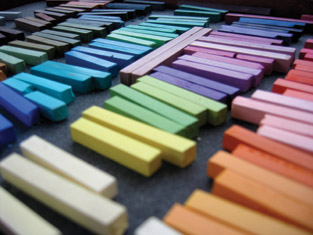
Self-Pressurized Aerosol Containers
Proposed standards for aerosol products and artists pastels are among the current activities of Subcommittee D01.57 on Artist Paints and Related Materials, part of ASTM International Committee D01 on Paint and Related Coatings, Materials and Applications.
Aspiration Potential of Aerosol Products
Self-pressurized aerosol containers that contain 10 percent or more petroleum distillates and come out as a stream can present an aspiration risk, since inhaling such fluids has been associated with chemical pneumonia. A proposed new ASTM standard, WK37409, Test Method for Measuring Aspiration Potential of Aerosol Products, is being developed to support the evaluation of such products to determine whether they require special child-resistant packaging.
"Under Canada's Consumer Chemicals and Containers Regulations, aerosol canisters that contain 10 percent or more petroleum distillates and expel their contents as a mist would not be expected to present an aspiration risk and would not require special child-resistant packaging," says Woodhall Stopford, director of a toxicology laboratory at Duke University Medical Center that studies the safety of consumer products, and a D01.57 member. "Without using the test in this proposed standard, such products must be presumed to present a risk of aspiration and must have protective packaging. With testing using WK37409, manufacturers can be assured that such packaging is not necessary."
D01.57 is currently recruiting laboratories and manufacturers of self-pressurized aerosol containers to participate in interlaboratory testing for WK37409.
Artists Pastels
A proposed new standard, WK37916, Specification for Artists Pastels, will provide the pastel industry with a benchmark standard to allow them to test colors so that pastels can withstand exposure to light without fading.
"Being able to rely on a color to remain the same is important to an artist," says Michael Skalka, conservation administrator for the Conservation Division, National Gallery of Art, and chairman of D01.57. "Pastel paintings, like all other art forms where colors are blended or placed near other colors, maintain integrity and balance because the assumption is that the colors will remain the same over time. When colors fade, they upset the hue relationship in a painting, and the artwork loses the intent the artist wished to give it."
According to Skalka, manufacturers will be the primary users of WK37916, once it has been approved, because it will provide them with tests to determine color lightfastness that must be done with sophisticated equipment or special outdoor testing. Manufacturers are also being sought for the ongoing development of WK37916.
Skalka also notes that, in addition to WK37409 and WK37916, D01.57 is also planning to develop proposed standards on inkjet inks for artists, rigid support panels for paintings and historical paint manufacturing. All interested parties are invited to join in the work of D01.57.
CONTACT Technical Information: (WK37409) Woodhall Stopford, Duke University Medical Center • Durham, N.C. • Phone: 919-286-5744 • (WK37916) Michael Skalka, National Gallery of Art • Landover, Md. • Phone: 202-842-6439 | ASTM Staff: Jeffrey Adkins • Phone: 610-832-9738 | Upcoming Meeting: Jan. 27-29, 2013 • January Committee Week • Jacksonville, Fla.
 SN Home
SN Home Archive
Archive Advertisers
Advertisers Masthead
Masthead RateCard
RateCard Subscribe
Subscribe Email Editor
Email Editor